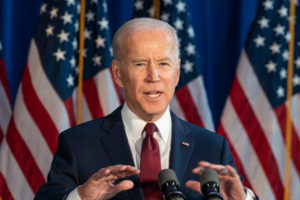In Part 1, the War on Labor Unions was exposed as a premeditated political attack on middle-class working men and women, cynically camouflaged as some sort of protection of the rights and freedoms of those very same workers. Gov. Rick Snyder of Michigan, who just signed legislation making his state the 24th”right-to-work” state in the nation, continues to claim that the new law is not “anti-union,” but rather “pro-worker.”
The underlying argument that fuels this canard is that workers should have freedom of choice when it comes to whether or not they want to join a labor union. The unions claim that mandatory union membership is a fair price to pay for getting a job in a business or industry in which all the workers are already protected by a contract that was achieved through union-sponsored collective bargaining. Nobody is taking away anyone’s “right” to work, they maintain, just the “right” to freeload off of fellow workers.
Vague Notion of Freedom
In Michigan, the unions just lost that battle as a matter of law. They also lost the public relations battle, having been portrayed as some sort of malevolent force intent on taking away from the rest of us something of value – in this case, some vague notion of freedom that was all too easily demagogued by the state’s politicians for the purpose of garnering public support for the anti-union measures.
In fact, right-to-work laws are simply a way in which union membership and power can be diluted and diminished. They are always sponsored by a state’s business interests as a way of tilting the labor/management scales more favorably in their direction. They are also used as an advertising gimmick to attract new business to a state; eventually, weakened unions means less bargaining power for them, which tends to drive down wages and labor costs. Nine out of 10 of the lowest-income states in the country have right-to-work legislation in place.
But while the dramatic public sideshow of the supposed ruin that labor unions are ostensibly causing the American economy is reaching some sort of climax, the real story of theft and robbery that actually has been harming states, cities and towns across the country for the past decade, was quietly and meticulously unearthed this past summer in a federal courtroom in downtown Manhattan.
Broad Conspiracy
In the matter of the United States of America v. Carollo, Goldberg and Grimm, federal prosecutors successfully proved that a broad conspiracy of banks, finance companies and various middlemen working together were able to rig the municipal bond market, allowing them to stealthily and systematically rip off municipal governments across the country of billions of dollars for a period of at least 10 years.
Here’s how the scam worked: Whenever municipalities need money for some public works project, they float a bond issue. A financial firm on Wall Street is contracted to issue those bonds, say, in a town’s name, and then sell them to investors who expect a return – principal plus interest – when the bond becomes due.
After its bonds are sold, a town now has a lot of cash in its coffers, which it will dole out – usually over several years – to builders, contractors, etc., until the particular project for which the bonds were issued is completed. But that means that it also has a lot of money sitting around that could be earning interest before it has to be disbursed. So the town hires a broker to set up a public auction, inviting banks to compete for the town’s business.
The broker’s aim is to get the town the best possible deal it can from among the banks’ secret bids. Generally at least three banks are required to offer competitive rates at auction. If Bank A offers, say, 5 percent, but Bank B offers 5 and a quarter, and Bank C, 5 and a half, the difference to a town with a multimillion-dollar bond sale can be many tens of thousands of dollars. Thus, an honest broker, indirectly, helps a town make money.
But if the fair-market system is illicitly rigged by banks colluding with one another and by bribing brokers into holding phony auctions in which each party already knows in advance what the other party is intending to offer, interest rates can be shaved and a town can lose precious points while the banks save money and the kickbacks flow.
And that is precisely what occurred. Instead of submitting competitive bids, big banks simply divvied up amongst themselves all the business of all the American cities and towns that had money to invest. And while the complexities of these financial shenanigans make it difficult to ascertain exactly how much money was skimmed over more than a decade’s worth of bid-rigging, it’s safe to say, based on the $673 million restitution that four big banks that took part in the scam agreed to pay after deciding to cooperate with the government’s case, that billions of dollars is not an unreasonable estimate.
The Perpetrators
Who were the perpetrators that managed this heist while politicians across the country were busy pointing the finger of blame at its unionized labor force? Here they are: Bank of America, Wells Fargo, J.P. Morgan Chase, USB, Goldman-Sachs, Transamerica, AIG, GE Capital (where Carollo, Goldberg and Grimm worked), as well as banks in Scotland, Germany, France and the Netherlands, not to mention the now-defunct investment firms Lehman Brothers and Bear Stearns, among others. Also indicted was CDR, the brokerage firm that set up many of the phony auctions.
So while the War on Labor Unions is really a diversionary scheme, the real war against the American people is the one that was quietly being executed by the giant banks and financial institutions, both foreign and domestic, and their many enablers, who really don’t believe at all in the free market on which the capitalist system is supposedly based.
And with each new disclosure of scandal and illegality (more and more banks, like London-based Barclays, have recently been accused of rigging LIBOR interest rates for years, an unlawful practice that affects all of our credit cards, home mortgages and personal loans), it becomes more and more clear that these enemies of the people don’t believe in taking prisoners either – just more and more of our own money. And it doesn’t seem to matter to them how they get it.


















